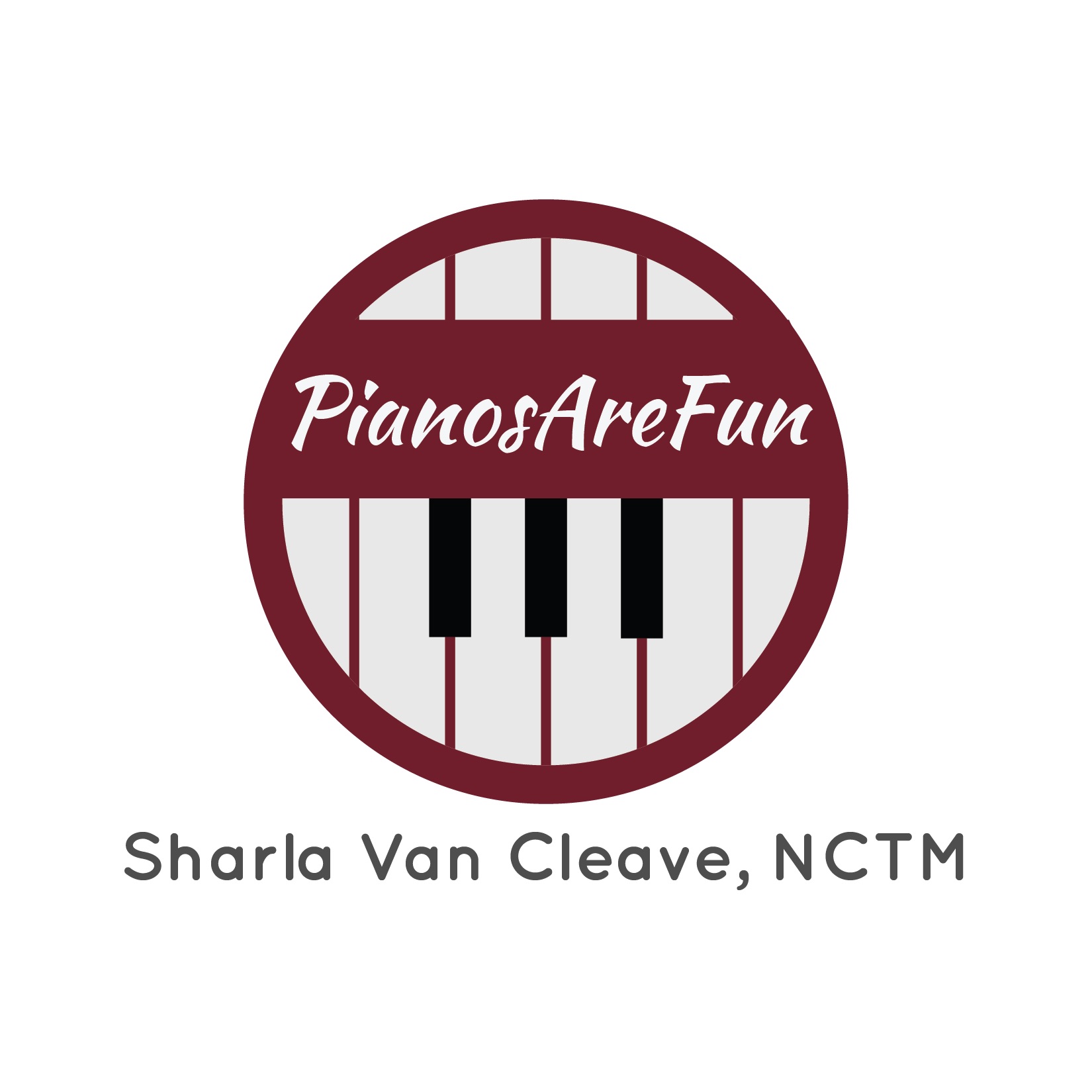Acoustic or Digital? How to choose and care for your instrument.
- Sharla Van Cleave

- Oct 4, 2020
- 6 min read
Acoustic Pianos: While I believe acoustic pianos are best, they must be of good quality. An instrument that is not of suitable working condition will not encourage the student to practice. Some students have been known to quit piano due to having poor quality instruments. A good acoustic piano will produce changes in tone with proper techniques used. An acoustic piano in superb condition will have 3 pedals in working order. However, we rarely use the middle pedal. It is quite necessary to have when we do need it. What to look for if purchasing a used instrument.
First check the sound board. Located in the back on an upright piano and underneath on a grand. Be sure there are no subtle or hidden cracks where the wood is pieced together or anywhere else.
Look inside and check the hammers for wear on the felt. While you can have new hammers put on, this is expensive and the deep grooves will give you an idea of how much wear is on the piano. Grooves in the hammers can also be picked out or fluffed so you might ask if any work has been done on the hammers recently if they appear flat. Also hammers can be shaved to give more of the flat appearance. Again, best to ask.
Strings and pins should be clean and free from any signs of rust even if minimal. Rust can cause a piano to be impossible to tune. If this is the case, then the piano is worthless. Make it into a bookshelf or cabinet.
The student should always always play the piano. You must fall in love with it by playing it before you buy it. Pianos are like people, they all look different, sound different and feel different. And, pianist do have their own opinion of what feel they prefer, even a small child who has had any lessons will have an opinion of what they think feels good or right to them.
My personal favorite for brands of piano are Kawai and Boston. Kawai is a good sturdy piano and is the best buy for the wear. It provides a great action and feel a nice sounding tone and is the best built for long lasting wear. I also love Boston. Boston has been made in the Kawai factory and is built by Steinway specifications. You just can't go wrong with that combination.
Age of the piano is something to be considered. All pianos have a lifespan.. There are many student's practicing daily on dead pianos. Sure pianos, like cars, can be rebuilt, but in my personal opinion its about the same as rebuilding a car. Always something else is going to need repair and that new engine just doesn't feel the same as the previous original one did when it was new. Some people don't' mind spending the money to rebuild a piano. But I've not played on an old piano that felt or sounded the same as a newer one. They just simply outlive their prime. Brand matters in pianos yes. Baldwins were built better before 1980's. If you find a Baldwin Acrosonic in good shape, you will have a good little starter piano. Even though it may be 60 years old. Hamilton was also associated with the Baldwin company in the old days and has good quality. The Baldwins of today are a different company and made different. The piano industry is extremely competitive and sells out from one brand to another with the same names commonly. Know your piano history and you can get a good used piano or you can get what you think is a good used piano but it may be the other company that purchased the name brand and may not be the same quality. Check the serial number of the piano. Pay the $25 to run it through piano blue book and you will get an accurate idea of what the piano is worth if it is in good condition. Yamaha, Boston, Kawaii, Baldwin are all names to consider. Essex, Pearl River and others not as well known may be because they are not the same quality. They are the lower end of the brand names who makes them. Some may still be great pianos, but do your homework. Don't leave it to the salesman to fill you in. I bet you haven't heard of Bosendorfer. The new rolls royce of pianos. You will pay a pretty penny for this European made piano. Better make sure your little Johnnie is going to be a prodigy concert artist. This one is sure to please even the most picky of all perfectionist.
Care of your acoustic piano: Pianos should be tuned every 6 months to one year depending on their location in your home. They should not be kept on an outside wall or under a vent. Studio two is almost a climate-controlled environment due to the overhang of the front porch and the other walls inside that room being inside walls. The temperature rarely ever fluctuates in that room plus, there is no sunshine directly on the piano. In studio one- that is a different story since the piano sits directly under a vent and in front of an entire row of windows. Tuning is required more frequently. If the acoustic instrument is properly cared for, it will last many years. A humidity monitor is also good to have to avoid the wood getting to dry or too moist since tiny little parts of wood can swell or contract Never allow any liquid around your acoustic piano. No drinks, even water. Spills can be disastrous since the strings can rust and the wood can be damaged. Never touch the strings with your hands as oils from the hands can also cause damage to the strings.
Digital Instruments: Never require tuning, however, there are many things that need to be considered when purchasing a digital instrument. Digital pianos can cost from $200 to $15,000. A good quality instrument should include weighted keys, a real shaped pedal which has degreed applications. The little black box that comes with some cheaper keyboards is not appropriate. The Yamaha pedal has 27 different degrees that can be used just like a real pedal on an acoustic piano. This means we can use the pedal in various ways to create different effects. A keyboard with less than 88 keys is not appropriate. Keyboards without a stand and adjustable bench are not appropriate because seating position is of utmost importance for the very first lesson. Digital keyboards have come to be known as disposable pianos due to when a module goes out or a key quits working, in most cases it is not fixable.
Keyboards and digital pianos suitable for lessons include:
88 keys (full size keyboard)
Touch sensitive keyboard (Creates dynamics (louds and softs) by touch only without adjusting the volume.
Weighted keys- made to feel more similar to a real acoustic piano. This is important to help simulate correct technique. Although tone can not be changed on even the very most expensive digital pianos even with today’s technology. We can still work on phrase shaping, lifts and articulation which can be expressed on a good digital piano.
Height from bench to keyboard matter. Placing a keyboard on the floor or on a table is not appropriate for the posture or hand position of the student and can cause injury, of tendons, not to mention creating bad habits.
X stands are adjustable, but some are not adjustable enough because they are made for keyboards used for jazz bands or praise teams where the keyboardist does not play like we do, but only uses simple chording while standing.
Z stands are not as sturdy but do provide more of the appropriate height. However, these are not adjustable at all, if your bench is not the right height.
Built in stands with matching bench is the best since it is the sturdiest, most like an acoustic piano and has height and bench measurements that match to the standards of acoustic pianos.
Care for Digitals: Follow the same care for your digital as you do your acoustic and it should last for many years if it is a reputable brand.
Remember- A musician is only as good as his instrument.
When you keep in mind, the amount spent on lessons over the years and the amount of time spent practicing on the instrument at home. It just makes sense to provide a quality instrument for the student. Often a parent will call about lessons and has already purchased an instrument which is not of suitable quality and is more like a toy keyboard. Commitment to lessons also requires a decent
instrument.
Often the student will start out on a piano that is of good quality but will then outgrow that instrument due to becoming more advanced with pieces that require more than the piano can give back.
For example, rebound of the keys may not be able to keep up with the repeated action of the performer. Thus, making the rhythm unable to keep up to the desired tempo with the same steady beat.
Follow my links to my personal recommendation for best quality for least cost.
This one has no stand, or bench but is lower cost.
Add the stand and bench for a bit more and have a better setting for practice. I have played on these at school and they are a great quality keyboard for the money.
Yamaha P 45 with built in stand and bench
This is the absolute best combo for the least cost for a digital set up. Good feel and quality. Should last the longest too.
This is what I use for lessons with classroom maestro and chordie. It also has bluetooth midi when used with an ipad or mac.



Comments